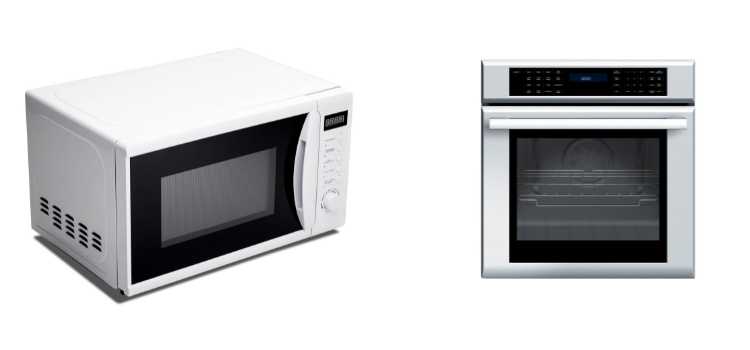As an Amazon Associate, I earn from qualifying purchases

In today’s world, where energy efficiency and cost-effectiveness are becoming increasingly important, understanding how much propane an oven uses can offer valuable insights for homeowners and culinary professionals alike. Propane is a popular choice for many due to its efficiency and availability.
It’s a versatile energy source used not only in outdoor grills but also in ovens for baking, roasting, and other kitchen activities. With the rising costs of energy and the growing emphasis on environmental sustainability, knowing how much propane your oven consumes is crucial. This knowledge can help you manage energy consumption better, reduce costs, and minimize your environmental footprint. This article explores the factors that influence propane consumption, how to calculate it, and offers tips for efficient use.
Factors Affecting Propane Consumption
Several factors determine how much propane an oven consumes. Understanding these can help you better manage your usage and improve efficiency.
- Oven Size and Type: The size and type of your oven significantly impact propane consumption. Residential ovens typically consume less propane compared to commercial ovens, which are larger and used more intensively. The size of the oven determines the amount of propane required to maintain the desired temperature. Larger ovens have more space to heat, thus needing more energy.
- Cooking Duration and Temperature Settings: The longer you cook and the higher the temperature, the more propane you’ll use. Frequent high-temperature cooking, such as roasting or broiling, requires more energy than baking at lower temperatures. It’s essential to match the cooking method with the appropriate temperature and duration to optimize propane usage.
- Frequency of Oven Use: How often you use your oven also affects propane consumption. Regular daily use will naturally lead to higher propane usage compared to occasional use. If you bake or cook frequently, it’s important to consider energy-efficient practices to keep consumption in check.
- Maintenance Practices: Proper maintenance can impact the efficiency of your oven. A well-maintained oven with a good seal will use less propane because it retains heat better, reducing the need for frequent cycling of the burner. Regular cleaning and inspection can help ensure your oven operates efficiently.
Calculating Propane Usage
Propane consumption is typically measured in British Thermal Units (BTUs), which indicate the amount of energy needed to heat one pound of water by one degree Fahrenheit. Knowing the BTU rating of your oven can help you estimate propane consumption.
- Average Consumption Rates: On average, residential ovens consume between 16,000 to 21,000 BTUs per hour, depending on size and settings. Commercial ovens, however, can use significantly more due to their larger capacity and continuous operation.
- Estimating Personal Usage: To calculate your propane usage, you’ll need to know the BTU rating of your oven and the number of hours it’s used. Multiply the oven’s BTU rating by the hours used, and then divide by the BTU content of one gallon of propane (approximately 91,500 BTUs per gallon). This will give you an estimate of how many gallons of propane you’re using.
Tips for Efficient Propane Use

Efficiency not only saves money but also reduces environmental impact. Here are some practical tips to optimize propane use:
- Regular Maintenance and Proper Sealing: Ensure your oven is well-maintained. Regularly clean the burners and check the seals to prevent heat loss. A properly sealed oven retains heat better, reducing the need for additional propane to maintain temperature.
- Optimal Cooking Practices: Minimize preheating time and batch cook when possible. Using residual heat by turning off the oven a few minutes before the cooking time ends can also save energy. Always match the size of the pot or pan to the burner to avoid unnecessary heat loss.
- Energy-Efficient Models: Consider upgrading to an energy-efficient oven model. Modern propane ovens are designed to use fuel more efficiently. Look for units with energy-saving features such as electronic ignition, which eliminates the need for a continuously burning pilot light.
Conclusion
Understanding how much propane an oven uses involves considering multiple factors, from the size and type of the oven to how often and how long it’s used. By calculating your propane usage and implementing efficient cooking practices, you can significantly reduce your energy consumption. Regular maintenance, choosing the right oven model, and adopting smart cooking habits can all contribute to better energy management.
As energy costs continue to rise, these simple steps can lead to substantial savings over time, while also supporting a more sustainable lifestyle. Embrace efficient cooking habits and enjoy the benefits of reduced energy bills and a smaller environmental footprint.
FAQ
Do ovens use a lot of propane?
Ovens generally use moderate amounts of propane, depending on their size and frequency of use. Residential ovens consume about 16,000 to 21,000 BTUs per hour. Efficient cooking practices and regular maintenance can help manage and reduce propane consumption, making them a practical choice for many households.
Does cooking use a lot of propane?
Cooking with propane can be efficient, especially with proper techniques. While tasks like baking or roasting at high temperatures may use more propane, everyday cooking consumes less. Monitoring cooking times, using appropriate heat settings, and leveraging energy-efficient appliances can help minimize propane usage effectively.
What appliance uses the most propane?
Propane furnaces and water heaters are typically the largest consumers in a household, as they require substantial energy to heat large volumes. In comparison, ovens and stoves consume less. Regular maintenance and opting for energy-efficient models can help reduce the overall propane usage of these larger appliances.
How much propane do you use in a day?
Daily propane use varies greatly based on household size, appliance efficiency, and usage patterns. On average, residential use might range from a few pounds to several gallons. Keeping track of appliance BTU ratings and monitoring consumption habits can help estimate daily propane usage more accurately.
As an Amazon Associate, I earn from qualifying purchases